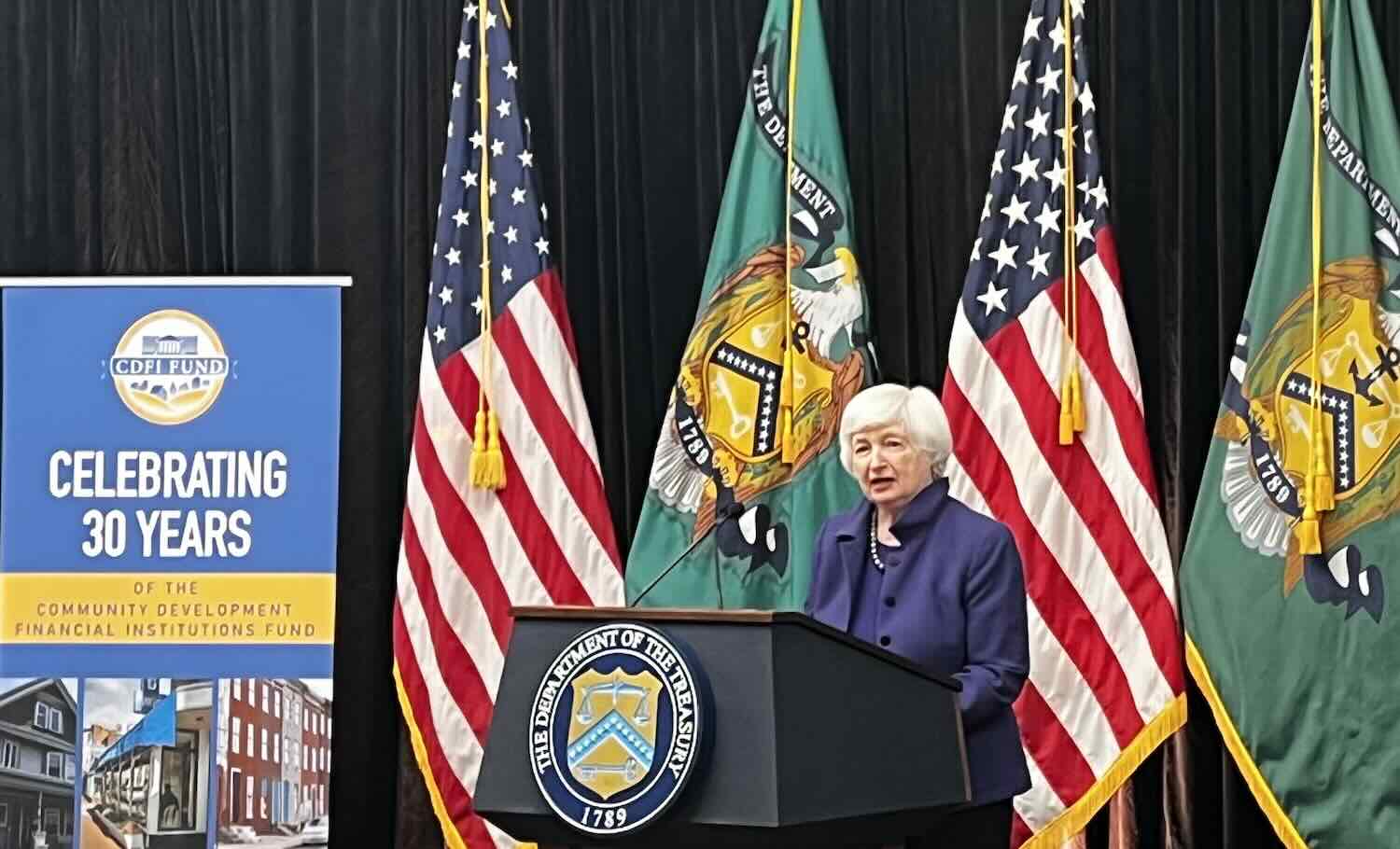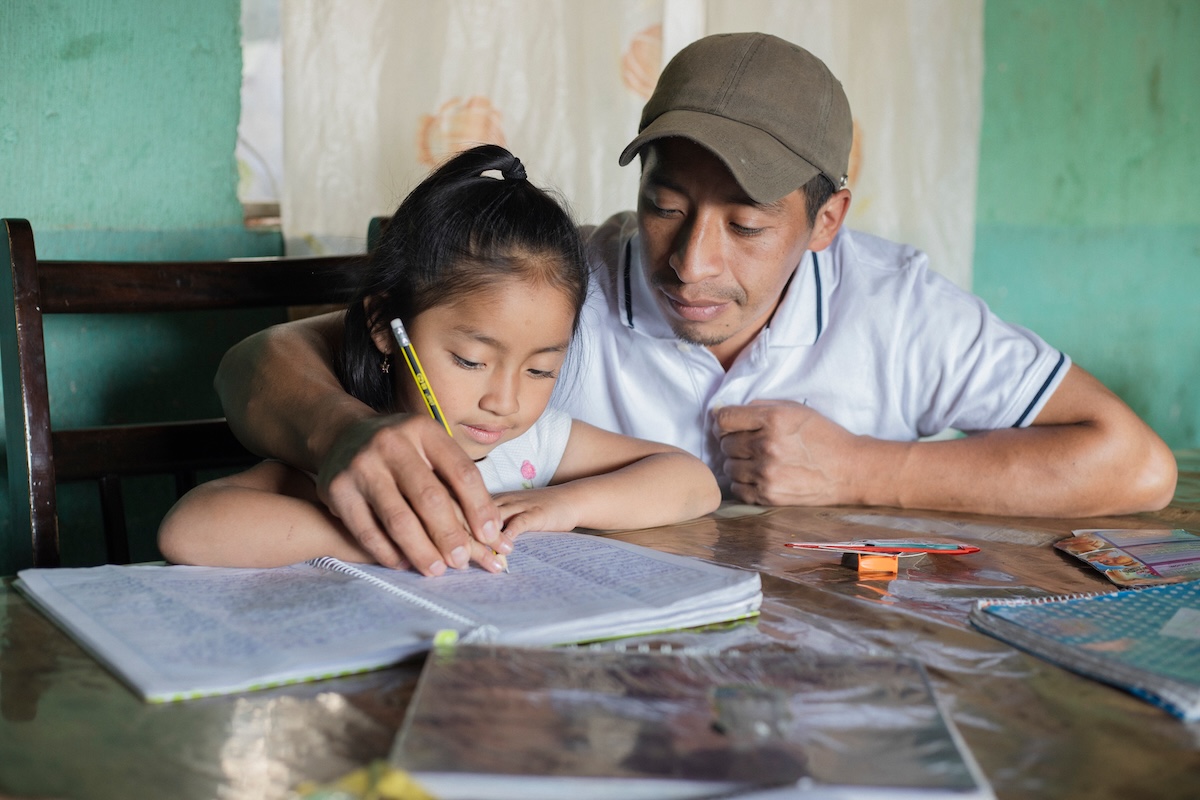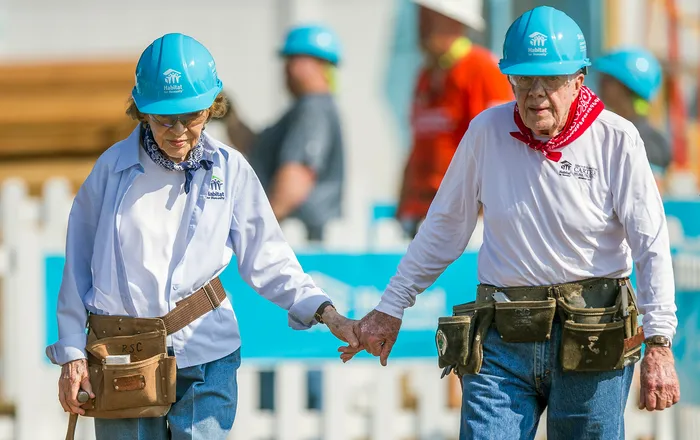If we were to tell you that there is a federal government agency that still enjoys bipartisan support, where folks from so-called Red States, Blue States and Purple States stand on common ground regarding an approach to investing in America’s communities, would you believe us? Well this place does exist and it’s called the Community Development Financial Institutions Fund, or CDFI Fund.
This month, the US Department of the Treasury celebrated the 30th Anniversary of the CDFI Fund with Secretary Janet Yellen President Clinton in attendance. A victory lap is in order. The CDFI Fund has successfully modeled how government can catalyze investment in historically disinvested communities in a way that attracts private capital and maintains a community-first lens.
In this time of deep political division, we need stories to remind us that we can work together across differences to achieve common goals. Community development financial institutions do that. They bring together public, private, philanthropic and community actors for the purpose of investing in economic mobility and more broadly shared prosperity. The CDFI Fund has been a protagonist in this story.
As former directors of the CDFI Fund, we had the honor of traveling the country to witness CDFIs in action. From New York City to LA, from the Arctic Circle to the Southern border, from Appalachia to Indigenous America and the Heartland, there are CDFIs providing essential access to capital. CDFIs are led by and serve Black, White, Latino, Asian, and Indigenous communities.
From ‘movement’ to ‘industry’
Since it was created with bipartisan support in 1994 during the Clinton Administration, the CDFI Fund has grown and strengthened through Republican and Democratic administrations. Community development finance was a nascent, grassroots “movement” back then, rooted in the belief that disinvested communities are places of opportunity. It is now an “industry” recognized by many as a core component of our nation’s critical and financial infrastructure.
CDFIs move capital to communities when and where it is needed most. The CDFI network has grown from less than 200 organizations certified as CDFIs in 1996 to over 1,400 today that collectively manage $450 billion in assets. There are certified CDFIs located in every state, the District of Columbia and Puerto Rico. They finance affordable housing, commercial real estate, and community facilities that deliver high quality healthcare, education and childcare. CDFIs help families and communities build wealth by financing small businesses and homeownership.
The CDFI Fund and the CDFI sector have achieved market and policy outcomes that have busted a few myths along the way. Those victories should not only be celebrated but should spur changes to long standing investment practices, and to the way policymakers shape other community investment programs.
Myth 1: Government programs chase away market investors.
The hypothesis formulated 30 years ago was that, with a little bit of public investment, CDFIs could attract private capital from a range of investors, such as banks, corporations, and philanthropy, especially if the government investment acted like equity capital. That hypothesis has been wildly affirmed. According to the CDFI Fund, CDFIs leverage $8 of private capital for every $1 of public investment through its core Financial Assistance program. A great return on taxpayer dollars.
Building on its early successes, the CDFI Fund grew to manage additional highly impactful programs including the New Markets Tax Credit Program, the Bond Guarantee Program, the Capital Magnet Fund, each with equally impressive or better leverage results.
Leveraging private sector capital is a significant achievement and is often recognized as such. There are two other myth-busting achievements we think should be lifted up as we celebrate the CDFI Fund’s 30-year anniversary, and acted upon as we move into the future.
Myth 2: Disinvested communities are too risky.
CDFIs have proven that the communities we serve—historically disinvested places—are creditworthy. That bears repeating: the communities we serve are creditworthy. And yet, powerful misperceptions about risk persist despite countervailing evidence to the contrary. We believe these misperceptions perpetuate ongoing gaps in access to capital for communities and for CDFIs and should be acknowledged and addressed.
The most recent Fitch Report on the CDFI sector states that CDFI “charge-off levels are comparable [to conventional financial institutions] despite the portfolios’ perceived higher risk and lower credit quality. The median 90+ day delinquency rate among CDFIs was 1.30% between 2017 and 2021, compared to 1.06% for banks. Furthermore, the median net-charge off rate among CDFIs was 0.48% between 2017 and 2021, similar to 0.50% for banks during the same time period, according to the FDIC and Opportunity Finance Network, the industry trade group for CDFIs. “
A Federal Reserve Bank of New York study taking a longer view on sector loss rates concludes that, “CDFIs have a cumulative net loan loss rate of ~1.5% over the last 20 years, which is on par with other FDIC insured institutions and demonstrates the relative strength of CDFI performance and repayment to investors.”
The gap between the perceived risk and the real risk of the investments CDFIs make has at least two important implications. The first is that investors are likely missing business opportunities if their risk models rely on faulty or outdated assumptions of the probability of default among the borrowers served by CDFIs.
The second implication is that CDFIs can’t grow as fast as they should because investor covenants meant to protect against losses are too restrictive. Ultimately, this stems the flow of capital to communities. Despite having loan losses consistently under 2%, most CDFI loan funds are required by their investors to hold 15-20% in net assets. That means for every $1 of equity on our balance sheets, we can only raise about $5 of debt. FDIC insured banks, who have similar loss rates, can leverage 8:1. Same track record, much lower ability to raise debt.
Likewise, CDFIs who are members of and borrow from the Federal Home Loan Bank system must offer higher levels of collateral for those borrowings than do other bank members. Same risk profiles, lower access to debt.
After 30 years of performance, it’s time for net asset ratio requirements for CDFI Loan Funds to be lowered by investors so that we can put more capital to work doing more good. We believe that high performing CDFIs with strong track records should have a net asset ratio requirement no higher than 10%.
Myth 3: Enterprise level investing won’t ensure good outcomes.
On the policy side, the CDFI Fund was designed in a way that was innovative at the time of its creation. It is still innovative today and it shouldn’t be. Instead of requiring federal resources to be directed to projects, as many community development programs do, the CDFI Fund’s Financial Assistance awards support strong organizations with strategic plans that achieve clear outcomes. They do not pick projects or impose project level restrictions that make it hard for communities to absorb capital.
This is referred to as “enterprise level” investing and, despite three decades of proven success, not many other federal agencies have adopted this approach. It’s powerful because it spurs innovation and growth, and most importantly, it places decision making in the hands of local communities. We urge policymakers to adopt the principles of enterprise level investing.
Over the past 30 years, through the ups and downs of economic cycles including the Financial Crisis, the Pandemic, and myriad natural disasters, CDFIs have proven more than resilient, they have proven essential, moving capital to the places and people who need it most. That’s because CDFI business models are effective, but also because CDFIs have been supported by the CDFI Fund.
The benefits are not just economic. The fabric of our communities are woven together through the work of CDFIs. And who are we as a nation, if not a collection of communities. The stronger our communities, the stronger our country. Let’s preserve and support the CDFI Fund for the next 30 years.
_____________________________
Annie Donovan is Raza Development Fund’s President & CEO. Donna Gambrell is President & CEO of Appalachian Community Capital












